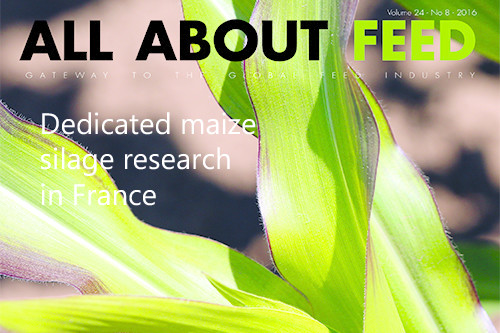New issue All About Feed now available online

The latest issue of All About Feed is now available online. In this bumper issue we take a look at nutritional strategies for obese cats, insect oil for weaned piglet, maize silage research for dairy cows and much more!
Feline weight management by dietary cellulose
Light cat foods are recommended for weight maintenance in overweight-prone animals. According to the European Pet Food Industry Federation (FEDIAF), the energy density of light foods should be at least 15% lower than that of comparable, regular products. The crude fibre level of light dry foods ranges from 4 to 12%. Veterinary weight-reduction diets for obese cats may contain up to 15% crude fibre.The insoluble cellulose fibre is commonly used as caloric diluter for the production of light and weight-reduction pet foods. When using conventional ingredients without cellulose, formulating low-calorie foods is a tough assignment. In the article from Anton Beynen it is explained how cellulose (a calorie-free, concentrated fibre source) can help.
Insect oil for piglet feed
In this issue we also report on an innovation; the first commercial piglet feed with insect oil. All About Feed talked to Coppens Animal Feed and Protix in the Netherlands about their partnership in this. Protix is producer of insect oil and insect protein and supplies the ingredient to Coppens, who further processes it to a commercial pelleted feed in their feed mill in Helmond, the Netherlands. The insect oil contains a high percentage of lauric acid, known for its antimicrobial properties and a tool to get gram negative bacteria (such as Streptococcus or Clostridium) under control. In addition, lauric acid has a fast and slow release, which means it is released throughout the whole intestinal gut.

Producing the best silage maize for cows
Maize silage is a popular roughage to feed to dairy cows and a tool to help dairy farms intensify when limited land is available. According to Arvalis ( the French Plant institute), increased yields in silage maize have been the result of genetics and better farming practices. Genetic progress has been made easier by using genotyping tools, statistical and IT methods and phenotyping for example. At Limagrain Europe, 140 different maize seed varieties are produced and a lot of attention is being payed to study new varieties, specifically for use as silage feed. All About Feed interviewed Benoit Delord, animal nutrition project manager at Limagain Europe.
Also in the September issue:
• Mixed grazing: the benefits of keeping sheep and cows together
• Interview with Joseph Carrica from Zinpro
• The new mycotoxin lab from Alltech
• How to improve digestibility of all nutrients?
• Fusariotoxin occurrence in different feed materials
• Efficacy of probiotics
• Improved feed quality from the silo
To read all the articles in this issue, go to the magazine overview page and sign up with your current website login.











